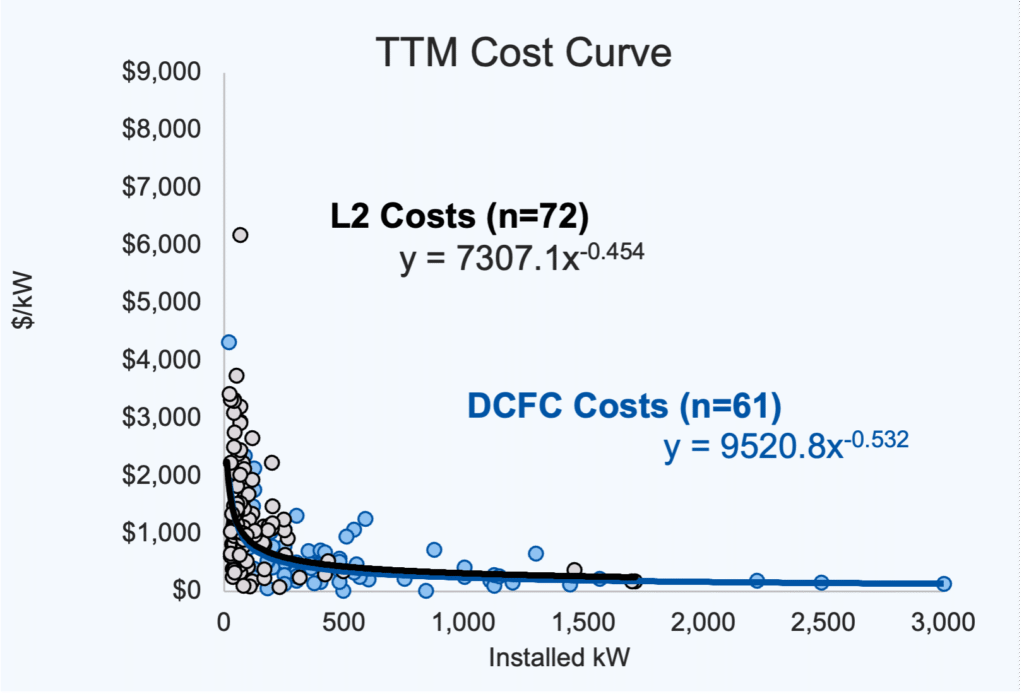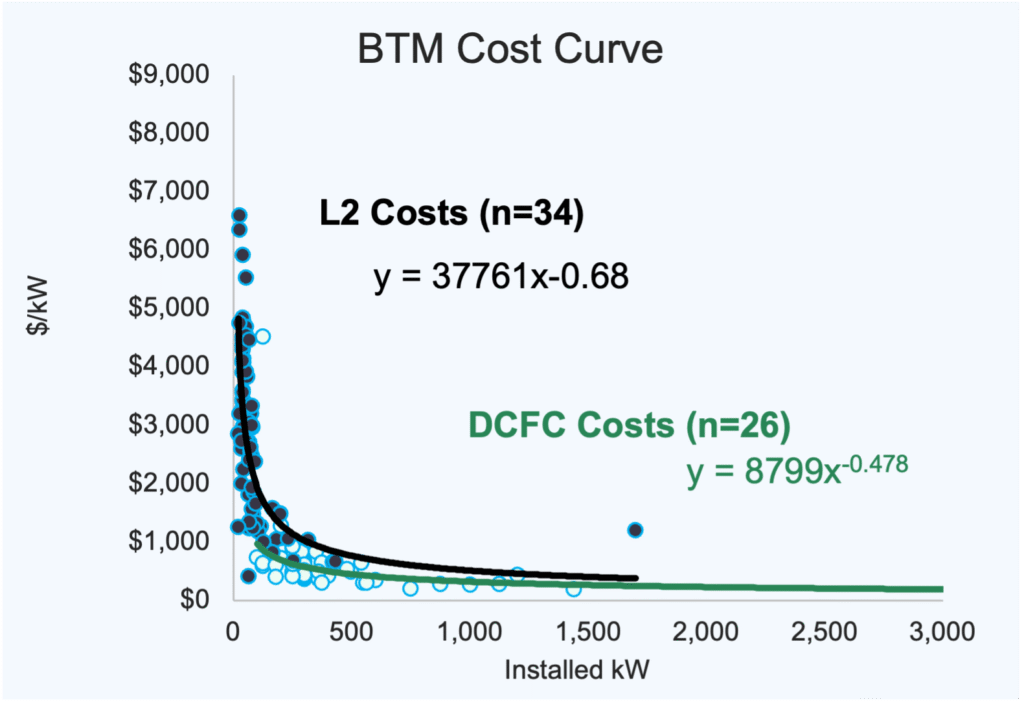Read more about Cadmus’ evaluation of the utility-led charging infrastructure programs across California.
These efforts evaluate nearly $750 million in investments—making this the most comprehensive look yet at how utility programs are helping move the state toward widespread EV adoption.
The report presents a comprehensive review of program performance, key outcomes, lessons learned, and recommendations to strengthen future deployment efforts. It spans technical and financial analysis, offering a roadmap for how to align EV charging infrastructure advancement with California’s ambitious climate, air quality, and transportation goals.
This blog post features a series of key findings from the latest evaluation report. Stay tuned for more highlighted topics in the coming weeks.
And many thanks to our supporting partners at NREL, UC Davis, ZMAssociates, and Energetics.
Our findings are based on a robust dataset that includes:
Of the ~2 million Class 2b-8* commercial and government fleet vehicles in California, 13,000 were fully electric at the end of 2024—0.7% of all vehicles in the state. This number includes vehicles like work trucks, delivery vans, school buses, transit buses, and forklifts, but excludes household vehicles (see Class 2b sidebar below on why). So, what’s holding back medium-duty and heavy-duty (MDHD) electrification? We addressed this question in our recent Evaluation Report of the three large utility make-ready programs in California.
Please reach out to our team if you would like to find out more or share your insights on barriers to MDHD electrification.
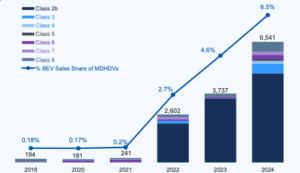 Background
Background Each year, about 100,000 new Class 2b-8 vehicles are sold in California. MDHD electric vehicle (EV) sales took off in 2022, corresponding with the rise of Class 2b EVs like the Rivian R1T, Rivian R1S, and Ford F-150 Lightning. Fast forward to 2024 and you see a continued rise across all vehicle classes, but especially Class 3-8. Overall, the state saw a 6.5% EV sales share among Class 2b-8 in 2024.
Is the 13,000 cumulative MDHD EV sales a success for the Golden State? When you look back at goals set 5+ years ago, fleets in the state are behind. In 2018-2019, a goal was set for three major utility programs to provide make-ready infrastructure for 1,800+ sites by 2026. As a result of supply chain issues, COVID and other factors, the California Public Utilities Commission (CPUC) has since revised the site goal down to a total 1,175, which still may not be achieved – though some individual utilities are on pace to meet targets.
This begs the question: what’s hindering EV adoption among MDHD fleets? Here are a few reasons we explore in our latest Evaluation Report:
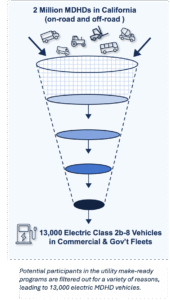
Class 2b vehicles can be a confusing vehicle category. These vehicles—defined as 8,501 to 10,000 lbs.—include larger pickup trucks and vans, such as the Ford F-150 Lightning Extended Range, Ford F-250, Chevy Silverado 2500, and the Tesla Cybertruck. The Federal Highway Administration (FHWA) calls them light-duty vehicles, while the Environmental Protection Agency (EPA) calls them heavy-duty. In California, Class 2b vehicles account for about 30% of all MDHD vehicles, so they are important as electrification strategies as designed. The big caveat with Class 2b is that an estimated 50% of them are household vehicles and park in a garage or driveway instead of a depot or other fleet-owned parking spot. This means the types of utility and government-led charging programs can vary widely.
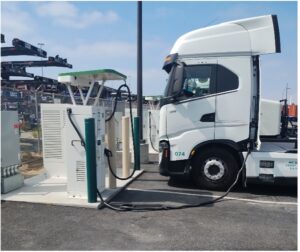
Electric trucks and buses are rolling out across the U.S.—from rural package delivery hubs to busy urban transit depots. However, few reliable sources assess the costs of installing the charging infrastructure for these fleets—costs that are born by either the electric utility, site host, and/or fleet. That’s where our work comes in.
Cadmus and Energetics lead the largest 3rd-party evaluation in the country of medium- and heavy-duty electric vehicle charging—an evaluation that encompasses over 60% of California’s Class 3 to 8 electric vehicles as of the end of 2024.
In our latest report, we analyzed data from 150 MDHD charging sites across California. These sites vary widely in size, location, and vehicle type. Here are some key takeaways:
